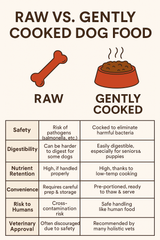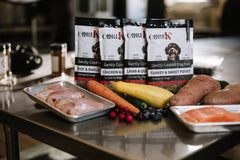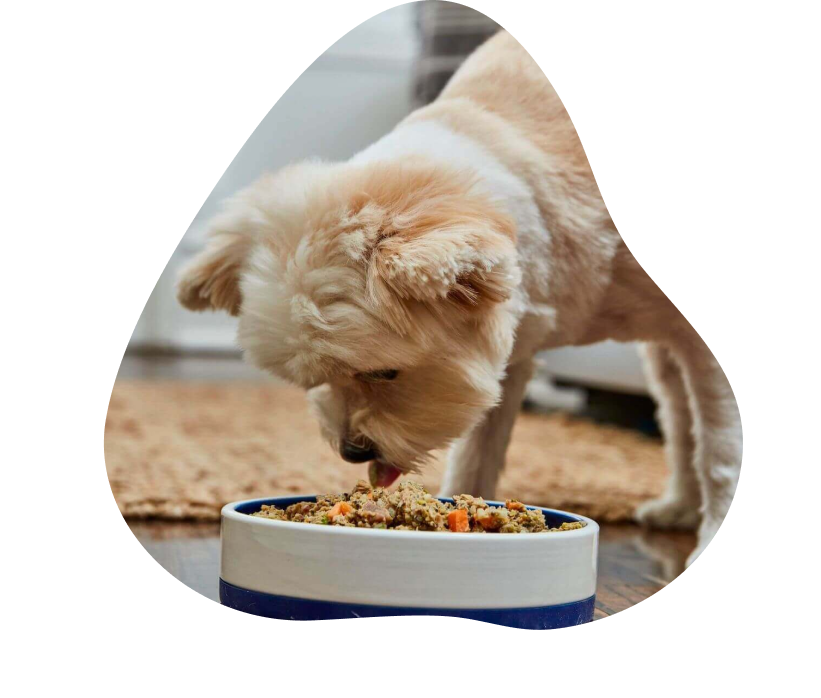Choosing the right food for your furry friend is crucial for their overall health and well-being. With so many options available, it can be challenging to navigate the world of dog food. In this blog post, we'll explore the key differences between gently cooked dog food and kibble, helping you make an informed decision about what's best for your canine companion.
What is Gently Cooked Dog Food?
Gently cooked dog food is exactly what it sounds like – fresh, whole ingredients that are cooked at low temperatures to preserve their nutritional value. Unlike traditional kibble, which undergoes high-heat processing, gently cooked dog food retains more of the natural nutrients found in raw ingredients. This cooking method ensures that your dog receives a diet that closely resembles what they would eat in the wild, providing essential vitamins, minerals, and proteins in a highly digestible form.
The Benefits of Gently Cooked Dog Food:
1. Nutritional Integrity: Gently cooked dog food retains more of the natural nutrients found in raw ingredients, providing a balanced and complete diet for your dog.
2. Improved Digestibility: The low-temperature cooking process makes gently cooked dog food easier for dogs to digest, reducing the risk of digestive upset and promoting better nutrient absorption.
3. Enhanced Flavor: The use of fresh, whole ingredients in gently cooked dog food results in a more flavorful and appetizing meal for your dog, encouraging better eating habits and enjoyment at mealtime.
4. Limited Processing: Gently cooked dog food typically contains fewer additives, preservatives, and fillers compared to kibble, making it a healthier option for dogs with sensitivities or allergies.
5. Customizable Options: Many brands of gently cooked dog food offer customizable options to meet your dog's specific dietary needs, including grain-free, limited ingredient, and protein-rich formulas.
What is Kibble?
Kibble is a type of dry dog food that is processed at high temperatures to create a shelf-stable product. It typically contains a mixture of meat, grains, vegetables, and other ingredients, which are ground into a fine powder, mixed with water, and then extruded through a machine to form small, uniform shapes. While kibble is convenient and cost-effective, it may not offer the same level of nutritional quality as gently cooked dog food due to the high-heat processing and use of additives and fillers.
The Drawbacks of Kibble:
1. Reduced Nutritional Value: The high-heat processing used to create kibble can degrade the natural nutrients found in raw ingredients, resulting in a less nutritious diet for your dog.
2. Digestive Issues: Some dogs may experience digestive issues, such as gas, bloating, and diarrhea, when fed a diet high in kibble due to its lower digestibility and higher fiber content.
3. Additives and Fillers: Kibble often contains additives, preservatives, and fillers to improve shelf life and texture, which may not be ideal for dogs with sensitivities or allergies.
Conclusion:
When it comes to choosing the right food for your dog, it's essential to consider their individual needs and preferences. While kibble may be a convenient option for many pet owners, gently cooked dog food offers several advantages in terms of nutritional quality, digestibility, and flavor. By understanding the differences between these two types of dog food, you can make an informed decision that supports your dog's health and happiness for years to come.




